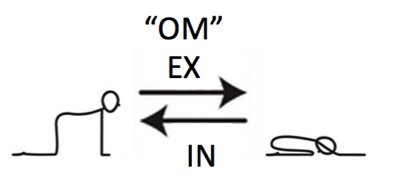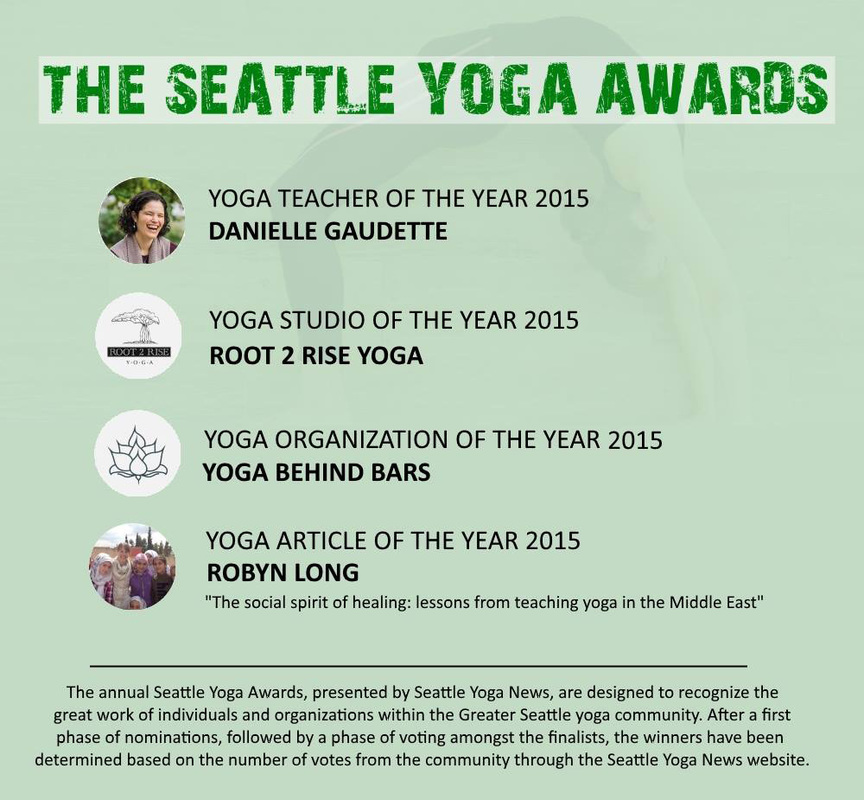An honor to be the recipient of Seattle Yoga News Award for "Yoga Article of the Year 2015"12/13/2015 It is a tremendous honor to be the recipient of "Yoga Article of the Year 2015" for my article on sharing yoga with Syrian communities. Thank you to Seattle Yoga News for recognizing this work and for sharing it with the broader yoga community.
The true recipients of the award are the courageous Syrians that I had the opportunity to work with in offering yoga. Their lives have been uprooted physically and polarized politically, and they have suffered immeasurable loss. They faced their grief and life’s uncertainty with love, humor, and an unstoppable drive to support one another – the foundation for collective healing. Endless gratitude to everyone who has been part of this project – I look forward to building on the momentum with you to continue offering yoga to more Syrians and other communities impacted by conflict. Read the original article on the Seattle Yoga News website.
0 Comments
Interested in incorporating mantras into your daily yoga practice? Bringing them into your asana practice is an excellent way to strengthen focus and deepen the benefits of yoga. Here are a few tips and an introduction exercise for beginners. What is a mantra? A mantra is a syllable, group of words, or phrases, which can be recited orally or silently. In Sanskrit, it is a term that combines two words: mananat (reflection) and trayate (protection). According to Yoga tradition, when we chant and reflect on a particular mantra we will see and experience the quality of that mantra, and thus we will be protected. For example, mantras that focus on the sun (e.g., sūrya) embody the qualities of light, energy, and radiance. Mantras focused on the moon (e.g., somena) evoke qualities that are cooling and nourishing. Chanting mantras before and during meditation has numerous benefits; it has subtle yet penetrating effects on both mind and body. Chanting, which creates vibrations in the throat, chest, abdomen, and jaw, has been found to stimulate vagal sensory afferents and promote relaxation [1]. Introducing mantra into your asana Using a mantra while practicing yoga postures (asana) is an excellent way to strengthen one’s focus, which in turn deepens one’s practice. Here are a few ways to include mantras in an asana practice:
An example of chanting “Om” on the exhalation in asana Starting with Om
Om is an powerful, yet simple mantra to begin using because it is a bija (seed) mantra. Bija mantras are one syllable and activate specific energy points to balance or purify the mind and body. Om is a sacred word that encompasses all other sounds in the universe. It is the primary sound from which all others emerged. While it is often written “Om”, a more accurate transliteration is “AUM” since there are three distinct sounds that blend together. The mantra represents four states of consciousness. A – is the conscious, or waking, state U– is the unconscious, or dream, state M – is the subconscious, or deep sleep, state There is a pause at the end of AUM, which represents the state of infinite consciousness How to pronounce Om Here are a few tips for pronunciation:
If you choose to chant out loud on the exhalation, the sound should come easily and comfortably. If you feel short of breath or any discomfort, alternate between orally and silently as you build up the breath capacity to chant out-loud. Here's how to try it today Chant Om when you exhale during any forward bending pose, such as Uttanasana (standing forward bend) or chakravakasna (as pictured above). Or during a gentle breathing practice at the end of your practice. The only hard-and-fast rule when chanting is to chant with joy and gratitude from the heart – so don’t hesitate to begin today! Stay tuned for more Monday Mantra tips and sign up for the monthly newsletter with more detailed suggestions for practice. 1. Brown, R.P., Gerbarg P. L. (2005). Yoga: A Breath of relief for Hurricane Katrina refugees. The Journal of Family Practice, Vol. 4, No. 10. http://www.jfponline.com/Pages.asp?AID=2736 This is the first #sevasaturday post –check out the past post discussing seva from Nov. 21, 2015.
Last spring I was fortunate to have had an opportunity to volunteer with a Syrian organization and offer yoga to Syrians who had sought safety in Turkey (here’s an article about the project). Back home in Seattle, I’ve explored ways to continue supporting Syrian communities. Friends and colleagues have asked for information on how they can help too. Here are a few ways that I’ve found to be active in supporting Syrians. 1. Donate funds to grassroots organizations promoting peace Several inspiring Syrian organizations are building a brighter future in their country by promoting civil society, human rights, and peace initiatives. Three great places to donate funds:
Winter is coming and refugee camps will be cold in Europe and the Middle East. Children need hats and sweaters to keep warm in the camps. Syrian women are also in need of reusable menstrual pads. A Seattle-based organization is coordinating the delivery of these items – see the post by the Salaam Cultural Museum. 3. Make your voice heard in supporting Syrian refugees Sadly, in the wake of the attacks in Paris, many politicians and individuals are attempting to block the resettlement of Syrian refugees in the U.S. This response is based in fear and collectively punishes people who are fleeing the same violent groups that carried out those attacks. Here are a few ways to promote compassion:
4. Be a volunteer in programs for Syrian refugees in your community The International Rescue Committee has offices and networks throughout the US that facilitate refugee resettlement. Check out their Volunteer Page to find opportunities to welcome Syrians locally. Google other local organizations in your community. For example, World Relief in Seattle is gathering supplies to furnish homes for refugees, recruit English tutors, and organize events. One of the aspects of yoga that I’m most drawn to is the concept of seva, a Sanskrit term that refers to selfless service. Seva is considered to be a core aspect of personal growth and transformation in the path of yoga. The ancient yoga gurus believed that practicing seva enables us to attain a deeper understanding of ourselves and, as a result, attain a higher level of consciousness.
Two pillars of seva are compassion and promoting collective wellbeing. There are dozens of ways that we can practice seva on a daily basis – everything from random acts of kindness to volunteering with a community organization, or spending quality time with your family. What is most important in selecting activities is that:
Anyone who has volunteered for a cause they are passionate about knows the power of giving your time and energy – it is inspiring, humbling, and often a lot of fun! To foster the exchange of ideas about practicing seva, I’m starting a series of #sevasaturday posts. Keep watch for ideas and share your seva activities to inspire more action. |
It is a tremendous honor that my article on sharing yoga with Syrians won "Yoga Article of the Year" in Seattle Yoga News. Endless gratitude to everyone who was part of and supported this inspiring project.
Archives
July 2017
Categories
All
|






 RSS Feed
RSS Feed